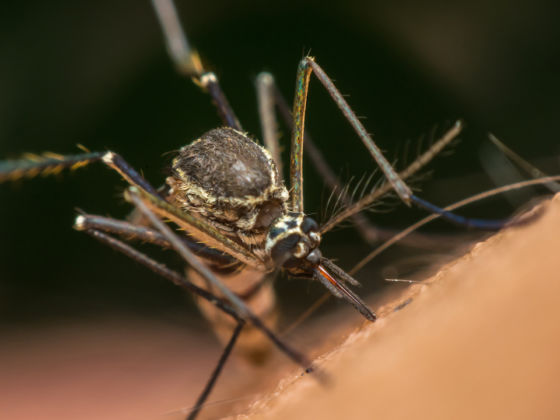THE RECENT EXPLOSION OF THE ZIKA virus is unlike other pandemics in one very frightening way: its most harmful effects are reserved for unborn children. The virus, which has rapidly spread in the last few months through Central and South America, has no cure or vaccine, as until now, it has been considered less dangerous than other mosquito-borne viruses like malaria, chikungunya, and dengue fever, and thus less of a priority for medical research.

Why Climate Change Means We're Going to Get More Outbreaks Like Zika
The Zika Virus was first identified in the late 1940s in a monkey in the Zika Forest in Uganda, and wasn’t seen in humans until 1952. For a long while, it stayed mostly in the tropical regions of Africa and Asia, before starting to spread across the Pacific, eventually making its way to Central and South America by April of 2015. Like malaria, dengue, yellow fever, and chikungunya, it is spread through mosquito bites. Unlike those diseases (which are often more severe in terms of symptoms), it has been potentially linked to microcephaly (a birth defect involving the abnormal growth of the brain) in babies whose mothers had the virus while in utero.
So why now? Why, if the disease has been in Africa and Asia for decades, is it just now exploding across the Americas?
One factor may be climate change.
Climate change and mosquito-borne illnesses
The obvious advantage to a disease being transmitted through mosquitos is that it never has the chance of taking off any place where mosquitos can’t live and thrive. For example, here in the temperate regions of the United States, it’s possible for mosquitos to live during certain months out of the year. But they can’t live all year round. This means that, while malaria can spread in the summer time in these temperate regions (humans can also serve as carriers of malaria, but the disease is still mostly transmitted by mosquitoes), they can’t spread in the winter time when all (or most) of the mosquitoes have died. This gives public health officials in the US a few months a year of breathing room to combat the spread of malaria and other similar diseases.
In the tropical world, there is no such breathing room, and also, unfortunately, much of the tropical world is also the developing world, which means that many of the countries that mosquitoes flourish in do not have the public health infrastructure to tackle the spread of mosquito-borne illnesses effectively.
And that’s where climate change comes in: the World Health Organization (WHO) says that diseases like malaria and Zika can only thrive in areas where the temperature is between about 61°F and 100°F. At around 86°F, mosquitoes develop much quicker than at lower temperatures. So, in short, if the world gets warmer, then the places where mosquitoes can thrive will expand.
There’s some hope.
This does not mean that every developed country is about to experience an onslaught of mosquito-borne illnesses: it just means that outbreaks like Zika are going to become more likely. For one thing, mosquitoes require wet environments to flourish. Most importantly, they need a week’s worth of still water in order to breed. So places that become drier as a result of climate change will be less at risk, and places that have effective drainage will be able to prevent their water for sitting for a week, thus making it harder for mosquitoes to breed en masse.
So only certain places are going to be more at risk. Where specifically is hard for scientists to predict, but we do know one thing: mosquito-borne illnesses disproportionately affect the poor. Poor communities are more likely to have areas that have been neglected by public health officials, and are less likely to have good drainage. They are also less likely to have mosquito-preventive measures like window-screens (which keep mosquitoes from coming through the windows) or air conditioning (which keeps the windows closed).
Poverty, then, is one of the other major causes of the spread of mosquito-borne diseases. Which means that there’s good news: this is all very much fixable. The United States had major problems with malaria outbreaks until the 1930s, when massive public works programs helped eliminate mosquito breeding grounds, and saw the installation of window screens and air conditioning in much of the country. Now, malaria is basically non-existent in the United States.
While we have the leg up of having a more temperate climate, this is possible in other countries, too: if we get better about our preventive measures — by distributing mosquito nets and insect repellent, by educating local populations about how to prevent mosquitoes from breeding, by acting quickly when people do become infected — we can wipe out mosquito-borne illnesses in the rest of the world, too.
If you’re interested in helping in this fight, you can give to the Against Malaria Foundation, which is not only fighting mosquito-borne illnesses, but is also one of the most effective charities in the world when it comes to saving lives.
By allowing climate change to happen in the first place, we’ve made the fight against diseases like Zika a little bit harder for ourselves. By allowing massive portions of the world to remain in staggering poverty, we’ve hobbled our ability to prevent pandemics. But while preventing climate change may not be reversible at this point, global poverty is. This doesn’t have to happen.